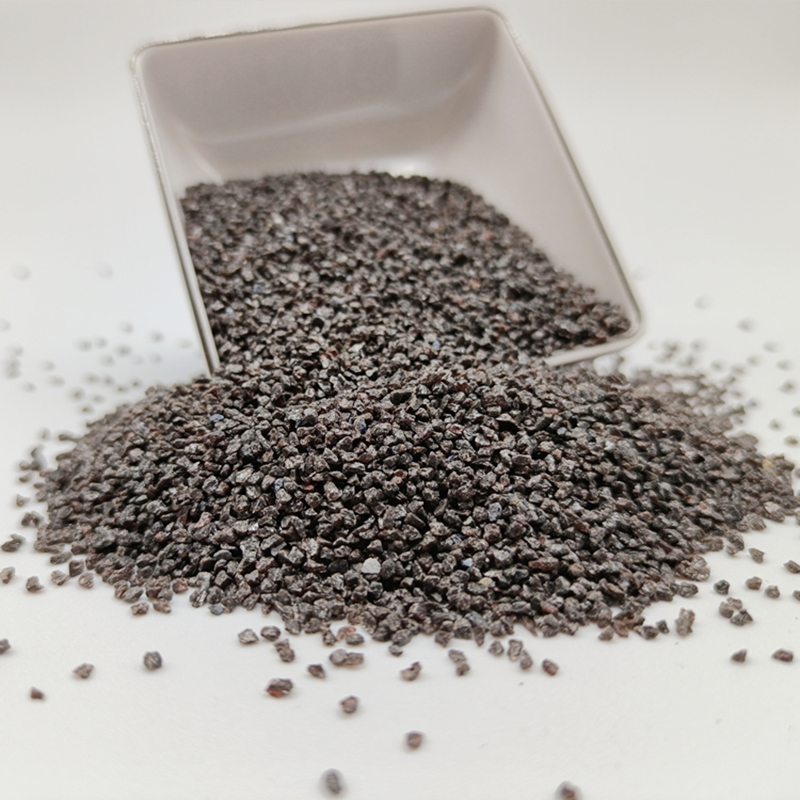Alumina powder is the main raw material of white fused alumina grit and other abrasives, which has the characteristics of high temperature resistance, corrosion resistance and stable properties. Nano-alumina XZ-LY101 is a colorless and transparent liquid, which is widely used as additives in various acrylic resins, polyurethane resins, epoxy resins, etc. It can also be a water-based or oil-based solvent, and can be coated on glass coating materials,gemstones, precision instrument materials, etc.; and different types of alumina powder have different uses. The following focuses on introducing the use of α, γ, and β-type alumina powder.
1.α-alumina powder
In the lattice of α-type alumina powder, oxygen ions are closely packed in hexagonal shape, Al3+ is symmetrically distributed in the octahedral coordination center surrounded by oxygen ions, and the lattice energy is very large, so the melting point and boiling point are very high. α-type oxidation Aluminum is insoluble in water and acid. It is also called aluminum oxide in the industry. It is the basic raw material for making metal aluminum; it is also used to make various refractory bricks, refractory crucibles, refractory pipes, and high temperature experimental instruments; it can also be used as abrasive, flame retardant High-purity alpha alumina is also the raw material for the production of artificial corundum, artificial ruby and sapphire; it is also used to produce the substrate of modern large-scale integrated circuits.
2. γ-alumina powder
γ-type alumina is aluminum hydroxide in 140-150 ℃ low-temperature environment dehydration system, industry is also called active alumina, aluminum glue. The structure of the oxygen ion approximation for the vertical side of the center closely stacked, Al3 + irregularly distributed in the oxygen ion surrounded by octahedral and tetrahedral gaps. γ-type alumina insoluble in water, can be dissolved in strong acid or strong alkali solution, it will be heated to 1200 ℃ will all be converted to α-type alumina. γ-type alumina is a porous material, the internal surface area of each gram up to hundreds of square meters, high activity adsorption capacity. The industrial product is often a colourless or slightly pinkish cylindrical particle with good pressure resistance. In petroleum refining and petrochemical industry is commonly used as adsorbent, catalyst and catalyst carrier; in industry is transformer oil, turbine oil deacidification agent, also used for colour layer analysis; in the laboratory is a neutral strong desiccant, its drying capacity is no less than phosphorus pentoxide, after use in the following 175 ℃ heating 6-8h can also be regenerated and reused.
3.β-alumina powder
β-type alumina powder can also be called active alumina powder. Activated alumina powder has high mechanical strength, strong hygroscopicity, does not swell or crack after absorbing water, non-toxic, odourless, insoluble in water and ethanol, has strong adsorption for fluorine, mainly used for fluoride removal of drinking water in high fluorine areas.
Activated alumina has the ability to selectively adsorb water from gases, water vapour and certain liquids. After adsorption saturation, it can be revived by removing water by heating at approx. 175-315°C. Adsorption and revival can be carried out several times. In addition to being used as a desiccant, it can also adsorb vapour from contaminated oxygen, hydrogen, carbon dioxide, natural gas etc. of lubricating oils. It is also used as a catalyst and catalyst carrier and as a carrier for colour layer analysis.




